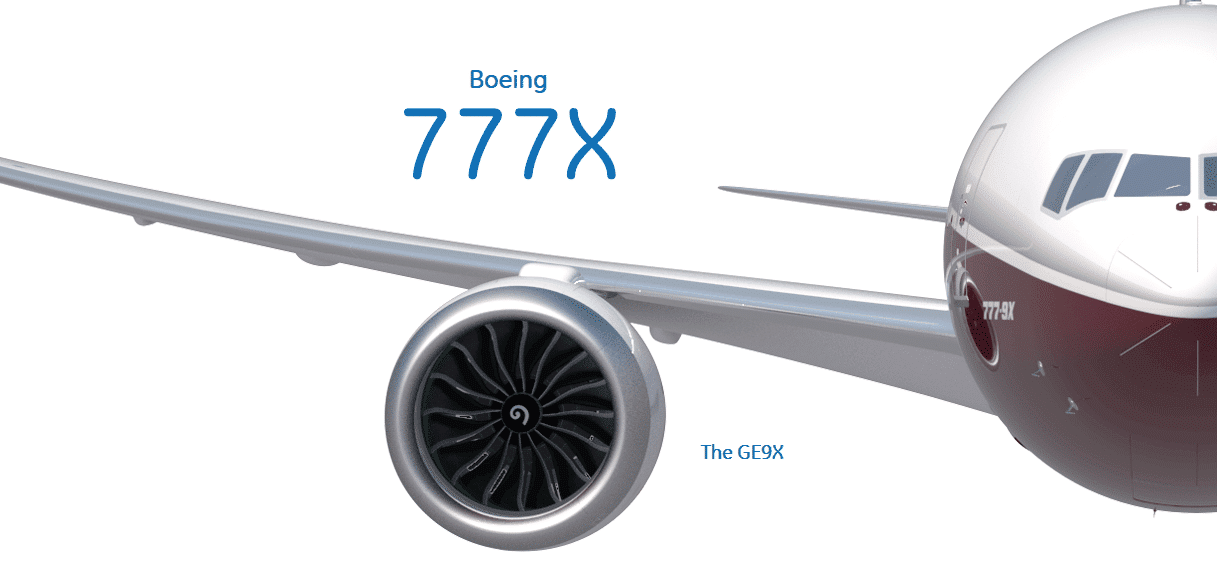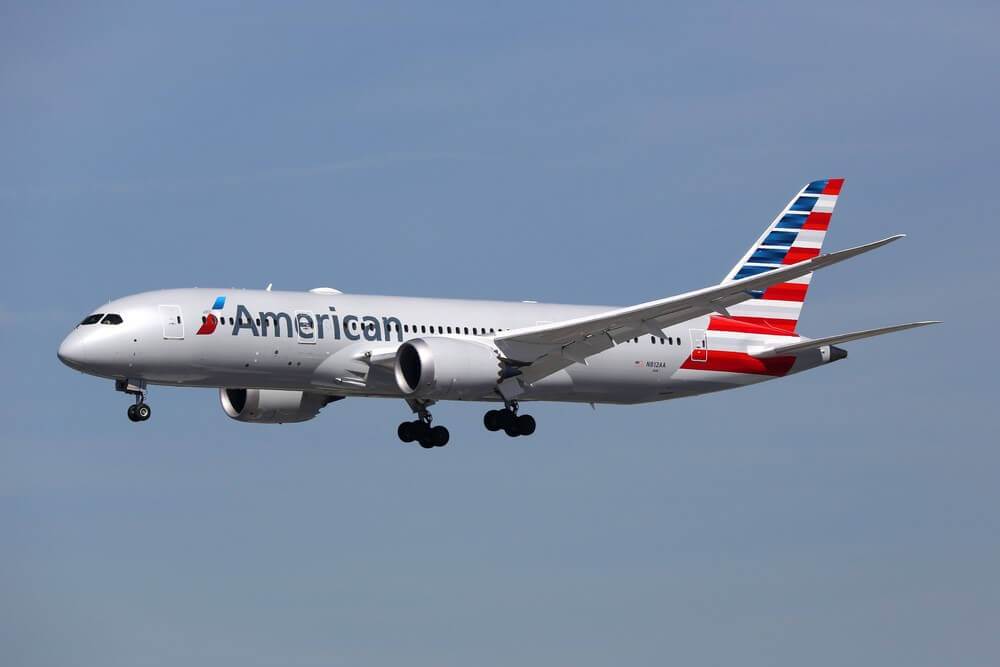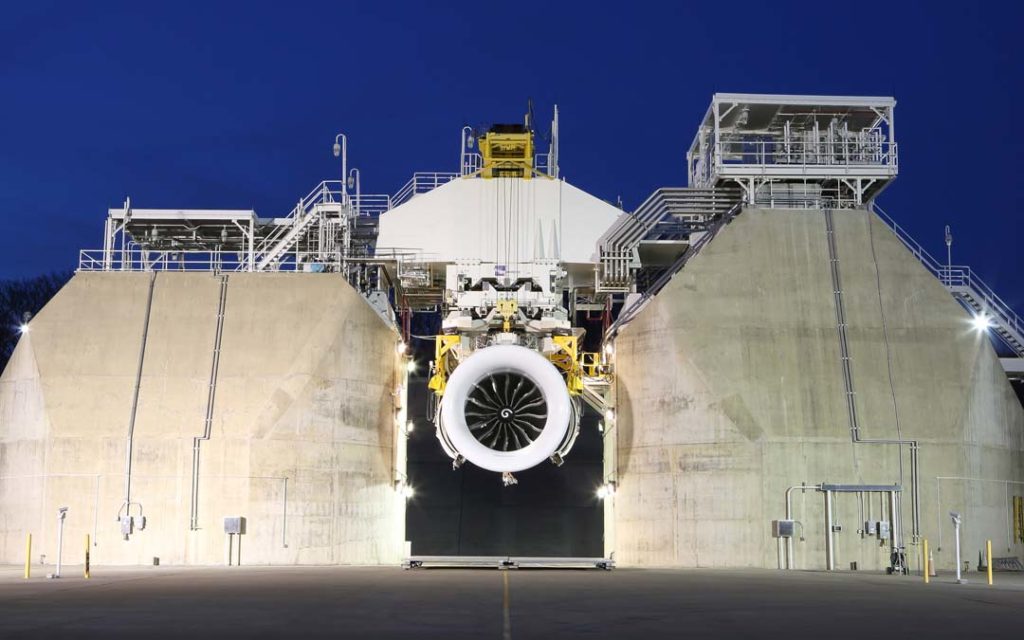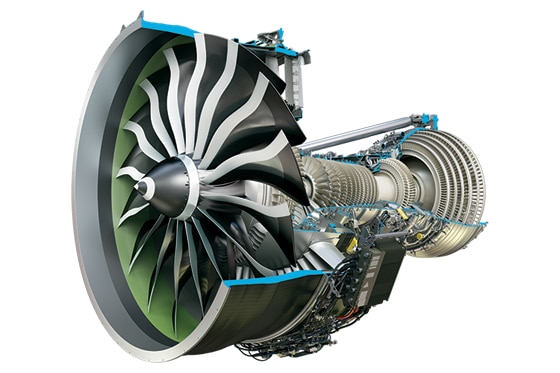Aviation
GE9X engine achieves FAA certification

EVENDALE, OH – SEPTEMBER 28, 2020 – GE Aviation announced today its GE9X engine has been certified by the U.S. Federal Aviation Administration (FAA) authorities, a key milestone in its journey to power the new twin-engine Boeing 777X family.
The FAR (Federal Aviation Regulation) Part 33 certification involved eight test engines. This certification achievement culminates GE Aviation’s renewal of its commercial jet engine portfolio, including the GEnx for the Boeing 787 Dreamliner and the CFM LEAP engine.
The GE9X test engines completed just under 5,000 hours and 8,000 cycles for certification.
“Just as the GE90 pioneered new technology for commercial aircraft engines more than 25 years ago on the Boeing 777, the GE9X sets the new standard for engine performance and efficiency thanks to the incorporation of GE’s most advanced technologies developed over the last decade,” said Bill Fitzgerald, vice president and general manager of Commercial Engines Operation for GE Aviation.
The GE9X engine is designed to achieve 10 percent lower specific fuel consumption (SFC) compared to the GE90-115B and five percent better SFC than any other engine in its class. The engine will also operate with less smog-causing emissions than any other engine in its class.
“This milestone has been accomplished thanks to the tremendous efforts of the GE9X team and our partners,” said Karl Sheldon, GE9X program general manager. “The GE9X engine has been through a rigorous and thorough certification and testing process. We are pleased with the performance of the engine, which has been validated through extensive ground and flight testing. We are excited to deliver a mature, state-of-the-art product to operators around the world.”
GE’s focus remains working with Boeing to complete the 777X flight test program and entry into service. Eight GE9X test engines and two test spares have been produced and delivered to Seattle for Boeing’s four 777X test airplanes. Several GE9X production engines have been assembled, and GE Aviation is in the process of completing factory acceptance tests.
GE Aviation is currently conducting 3,000 hours of additional ground testing on the GE9X engine to support Extended Operations (ETOPS) approval. The GE9X team is also conducting maturation testing to help GE engineers prepare to support the engine in service.
For service and support of its customers, GE has established GE9X engine training courses at its Customer Technical Education Center (CTEC) facility in Cincinnati. A GE9X engine currently at CTEC is being used to develop lean maintenance practices that will be implemented in customer training modules and GE training procedures. Course work includes line maintenance, borescope and boroblend repair procedures, as well as fan stator removal and installation. The CTEC team is also working augmented reality/virtual reality (AR/VR) training courses to supplement the in-person training.
GE has received orders and commitments for more than 600 GE9X engines.
IHI Corporation, Safran Aircraft Engines, Safran Aero Boosters and MTU Aero Engines AG are participants in the GE9X engine program.
CFM is a 50/50 joint venture between GE Aviation and Safran Aircraft Engines.

Aviation
Airbus is set to increase the production rate for the A350 as demand surges

Airbus SE is set to boost production of its advanced A350 widebody jet as it capitalizes on rising demand for long-distance travel and wide-body aircraft, amidst the ongoing crisis affecting its competitor Boeing due to issues with the B737 Max.
The surge in orders for Airbus’s A350 aircraft has instilled confidence in the company, prompting them to ramp up production rates. This move is particularly advantageous as Boeing continues to grapple with production quality issues surrounding its 787 and 777x aircraft.
In 2024 alone, Airbus has received 137 orders for the A350, signaling a need to expand manufacturing capabilities to meet customer demands. With 1,277 orders received and 592 aircraft delivered as of April 2024, Airbus is poised to fulfill pending deliveries efficiently.
The European aircraft manufacturer announced plans to increase production of A350 jets to 12 per month by 2028, surpassing earlier projections aiming for 10 per month by 2026. This decision was disclosed alongside the company’s first-quarter figures.
The Asian market is proving lucrative for the A350, with significant orders from airlines like Indigo and Air India, totaling nearly 70 aircraft commitments for the future. Meanwhile, Airbus is progressing with its A220 and A320 programs, aiming for a monthly production rate of 14 and 75 aircraft, respectively, by 2026. Additionally, the long-range A321XLR is anticipated to commence service in the third quarter of the current year.
In contrast, Boeing has been compelled to scale back production due to regulatory pressures aimed at enhancing factory processes. While Airbus anticipates a positive market outlook, Boeing continues to face challenges with FAA certification and quality approvals, resulting in ongoing delays for its 737 Max and 777x models.
Financially, Boeing reported a significant cash burn of $3.9 billion in the first quarter, leaving it with $7.5 billion in cash and short-term securities by the quarter’s end, down from $16 billion at the beginning of the year. Consequently, Boeing’s stock has plummeted by 38% in the year so far, contrasting with Airbus’s 14% gain, marking Boeing’s lowest performance in over a year.
For a full listing including details on customers and regions, as well as historical data for the previous year, go to the download section below.
- March 2024 deliveries: 63 deliveries to 32 customers
- March 2024 gross orders: 137
- 2024 deliveries to date: 142 deliveries to 45 customers
| Single-Aisle | A300/A310 | A330 | A340 | A350 | A380 | TOTAL | |
|---|---|---|---|---|---|---|---|
| Total Orders | 19470 | 816 | 1774 | 377 | 1277 | 251 | 23965 |
| Total Deliveries | 11705 | 816 | 1598 | 377 | 592 | 251 | 15339 |
| Aircraft in Operation | 11007 | 271 | 1482 | 202 | 591 | 234 | 13787 |
Aviation
All passengers killed in plane crash, after pilot let his children to control the plane

When boarding a plane, passengers entrust their safety to the skilled hands of the pilot. However, tragedy struck when one of the flight ended in disaster as all passengers lost their lives in a horrific plane crash.
In 1994, during a flight from Moscow to Hong Kong, tragedy struck as an Aeroflot relief pilot made a fateful decision. In a move that would have devastating consequences, the pilot invited his own children into the cockpit to play with the controls. Little did anyone know, this seemingly innocent gesture would lead to the loss of all 75 lives aboard the aircraft.
It was a seemingly innocent act that led to catastrophic results. The relief pilot, Mr. Kudrinsky, invited his two children, Yana, 12, and Eldar, 15, into the cockpit during the late hours of the night. Little did anyone know, this simple gesture would set off a chain of events that would end in tragedy.
Once in the cockpit, the children were allowed to sit in the captain’s chair and play with the controls, unaware that they should have been disabled as the plane was in autopilot mode.
Eldar, perhaps in a moment of curiosity or innocence, held the control column down for a mere 30 seconds. Yet, in those brief moments, the autopilot disengaged, thrusting the aircraft into manual control.
By the time the pilots regained their seats and attempted to regain control, it was too late. Despite their efforts to pull the plane out of a dive, they overcorrected, causing the flight to climb almost vertically, ultimately stalling it.
Final moment Flight 593 crash
In the final moments, as the pilots struggled to stabilize the aircraft, Flight 593 crashed into the Kuznetsk Alatau Mountain range in southern Russia, completely obliterating the plane and claiming the lives of everyone on board.
Investigations revealed a chilling truth: there was no evidence of technical failure. Instead, the crash was attributed to the unthinkable decision to allow inexperienced hands to manipulate the controls of a commercial aircraft.
The black box recording captured the harrowing sequence of events, providing a grim reminder of the human cost of a lapse in judgment. In just over two minutes, the lives of all on board were tragically short, leaving behind a legacy of sorrow and unanswered questions.
Aviation
American Airlines Flight Attendant Orders First-Class Traveler to use Economy Restroom

On a recent American Airlines flight from Chicago O’Hare to Phoenix, Pamela Hill-Veal, a retired circuit court judge, found herself at the center of a disturbing incident.
Despite traveling in First Class, she was directed by a flight attendant to use the Economy Class restroom, sparking allegations of racial discrimination. According to Hill-Veal, the ordeal began when she used the dedicated First Class lavatory during the flight. A flight attendant approached her, accusing her of slamming the door and issued a warning.
Despite remaining calm, Hill-Veal faced further confrontation when she attempted to use the First Class restroom again later in the flight. The situation escalated as the flight attendant persisted in berating Hill-Veal, who felt targeted due to her race. She highlighted the disparate treatment, noting that white passengers were not subjected to similar directives.
In a distressing turn, the flight attendant followed Hill-Veal to her seat and allegedly touched her while threatening arrest upon landing. This alarming encounter left Hill-Veal feeling humiliated and traumatized, impacting her ability to rest even after the flight.
American Airlines has responded, expressing a commitment to investigating the matter and addressing discrimination claims seriously. However, the incident underscores ongoing concerns about racial bias in air travel and the need for accountability in ensuring all passengers are treated with dignity and respect.























